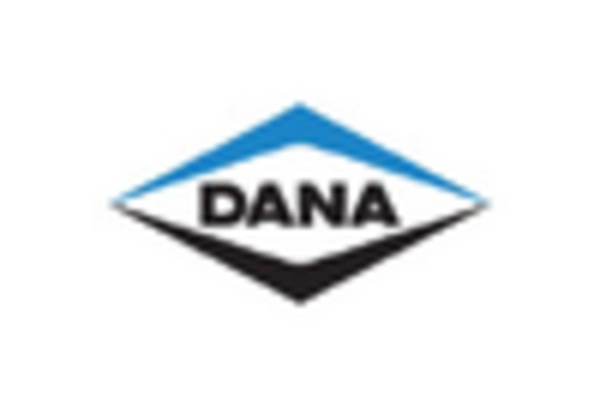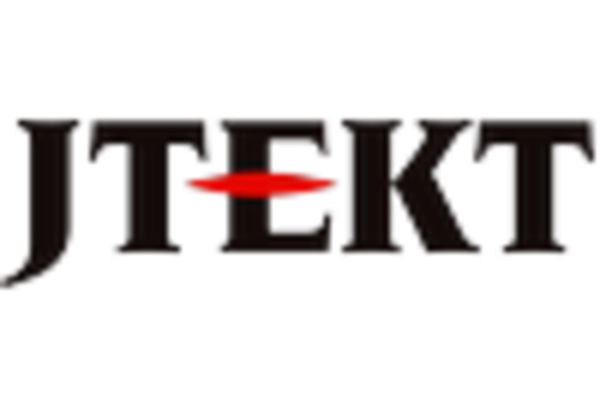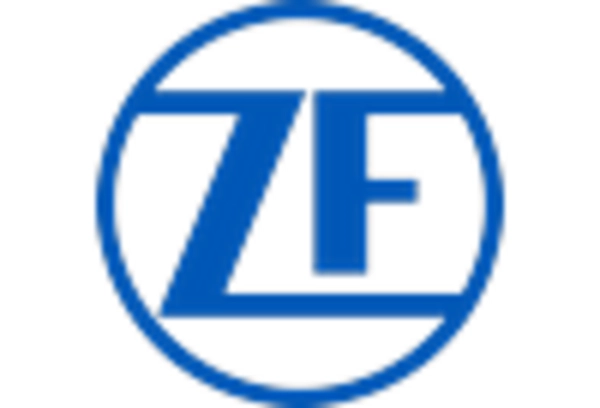Rising Automotive Production
The drive shaft market is experiencing growth due to the increasing production of vehicles in the US. In 2025, the automotive industry is projected to produce approximately 12 million units, which directly influences the demand for drive shafts. As manufacturers strive to enhance vehicle performance and efficiency, the need for high-quality drive shafts becomes paramount. This trend is further supported by the growing consumer preference for advanced automotive technologies, which necessitate the integration of sophisticated drive shaft systems. Consequently, the drive shaft market is likely to benefit from this surge in automotive production, as manufacturers seek to meet the rising demand for reliable and efficient components.
Expansion of Aftermarket Services
The drive shaft market is witnessing a notable expansion in aftermarket services, driven by the increasing number of vehicles on the road. With over 270 million registered vehicles in the US, the demand for replacement and upgraded drive shafts is on the rise. This trend is further fueled by the growing awareness among consumers regarding vehicle maintenance and performance enhancement. As a result, aftermarket suppliers are focusing on providing high-quality drive shafts that cater to diverse consumer needs. The aftermarket segment is expected to account for a significant share of the drive shaft market, potentially reaching a valuation of $3 billion by 2026, indicating robust growth opportunities.
Growth of Electric and Hybrid Vehicles
The drive shaft market is adapting to the growth of electric and hybrid vehicles, which are becoming increasingly prevalent in the US automotive landscape. As of 2025, electric vehicle sales are projected to account for 20% of total vehicle sales, prompting manufacturers to innovate and develop drive shafts that cater to these new technologies. While traditional drive shafts are designed for internal combustion engines, the shift towards electric drivetrains necessitates the creation of specialized components that can handle different torque and power delivery systems. This transition presents both challenges and opportunities for the drive shaft market, as companies explore new designs and materials to meet the evolving demands of the automotive sector.
Regulatory Compliance and Safety Standards
The drive shaft market is also shaped by stringent regulatory compliance and safety standards imposed by government agencies. In the US, the National Highway Traffic Safety Administration (NHTSA) has established guidelines that manufacturers must adhere to, ensuring the safety and reliability of automotive components, including drive shafts. As regulations become more rigorous, manufacturers are compelled to invest in research and development to produce drive shafts that meet these standards. This focus on compliance not only enhances product safety but also drives innovation within the drive shaft market, as companies strive to develop advanced solutions that align with regulatory requirements.
Increased Focus on Performance Enhancements
The drive shaft market is significantly influenced by the rising consumer demand for performance enhancements in vehicles. As automotive enthusiasts seek to improve their vehicles' power and handling, the need for high-performance drive shafts has become increasingly apparent. This trend is particularly evident in the sports and luxury vehicle segments, where manufacturers are investing in advanced materials and technologies to produce lightweight and durable drive shafts. The market for performance-oriented drive shafts is projected to grow at a CAGR of 6% through 2027, reflecting the industry's commitment to meeting consumer expectations for superior vehicle performance.

















Leave a Comment